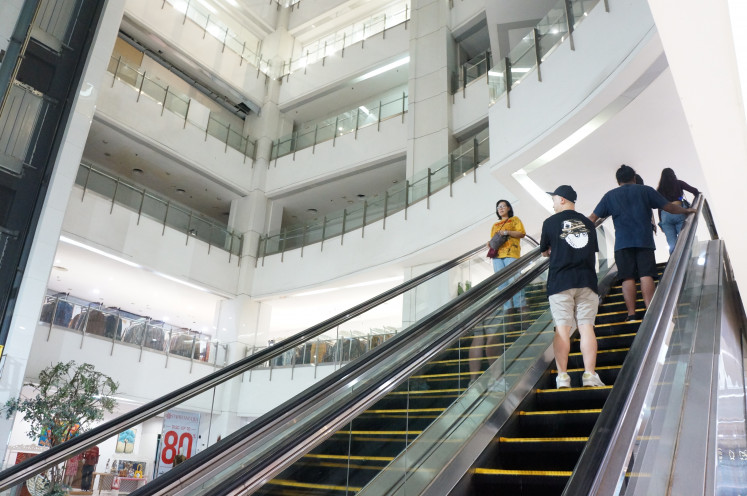City shares Ciliwung evictions plan with House
The city administration has reaffirmed its plan to relocate all residents from areas next to the Ciliwung River between next year and 2014, in efforts to reduce annual flooding from one of Jakarta’s main rivers
Change text size
Gift Premium Articles
to Anyone

T
he city administration has reaffirmed its plan to relocate all residents from areas next to the Ciliwung River between next year and 2014, in efforts to reduce annual flooding from one of Jakarta’s main rivers.
Speaking Monday at a hearing with House of Representatives’ Commission V overseeing transportation, telecommunications, public works, housing and underdeveloped regions, Jakarta Governor Fauzi Bowo said the administration, supported by the Coordinating Public Welfare office and Housing Ministry, was now seeking places to build low-cost apartments for up to 70,000 families who were living on the banks of the Ciliwung.
“We are looking for locations close to their current homes and workplaces so they won’t need to spend extra money for transportation once relocated,” Fauzi said.
Possible locations included Kebon Baru and the Pengadegan area in South Jakarta.
The plan to “clean up” the Ciliwung riverbanks was raised again after Fauzi and Coordinating Public Welfare Minister Agunga Laksono inspected the river recently.
Beside dredging and widening the river, the administration also planned to connect the Ciliwung with the newly operational East Flood Canal, to channel overflows.
If a typical low-cost apartment such as those in Marunda, North Jakarta, or Petamburan, Central Jakarta, contains between 600 and 1,000 apartments, the government and city administration will need at least 70 apartment complexes or 700 towers, each with at least 100 units, to accommodate all of the evicted residents.
“We have proposed that the central government should finance the land procurement and construction of apartments, while the city administration will be responsible for maintenance,” Fauzi said.
Along with Fauzi, the commission also invited Banten and West Java governors, the public work minister, the environment minister, the home minister and the chief of the National Land Agency to present their plans for flood prevention in the Greater Jakarta area.
“The invited parties have interconnected authorities in making and implementing flood prevention programs in the Greater Jakarta area,” commission head Taufik Kurniawan said in his opening remarks.
The Jakarta crisis center has identified 99 flood-prone areas in the city. In West Jakarta, 33 areas were identified, while North Jakarta had 26, East Jakarta 22, South Jakarta 10 and Central Jakarta 8.
To prevent flooding, the city has undertaken several measures, including the East Canal Flood project.
Once complete, the Rp 4.9 trillion (US$524.3 million) project will control waters from six major rivers in the city, including the Cipinang, Sunter, Buaran, Jatikramat, Cakung and Blencong rivers, and will help reduce flooding across the 270-square-kilometer flood-prone areas of eastern and northern Jakarta.
Legislator Nusyirwan Soejono from the Indonesian Democratic Party of Struggle (PDI-P), however, urged the city administration to focus on more than infrastructure projects to overcome the flood problem.
“The administration, for example, should also encourage residents
not to throw garbage into the river,” he said.
The Ciliwung River passes through the provinces of West Java and Jakarta. The source of the river is the Telaga Warna (Colorful Lake) at the foot of Mount Pangrago,
in Bogor.
Public Works Ministry data shows that the 119-kilometer river directly impacts a 440-square-kilometer area occupied by 3.5 million people in and around Jakarta.









